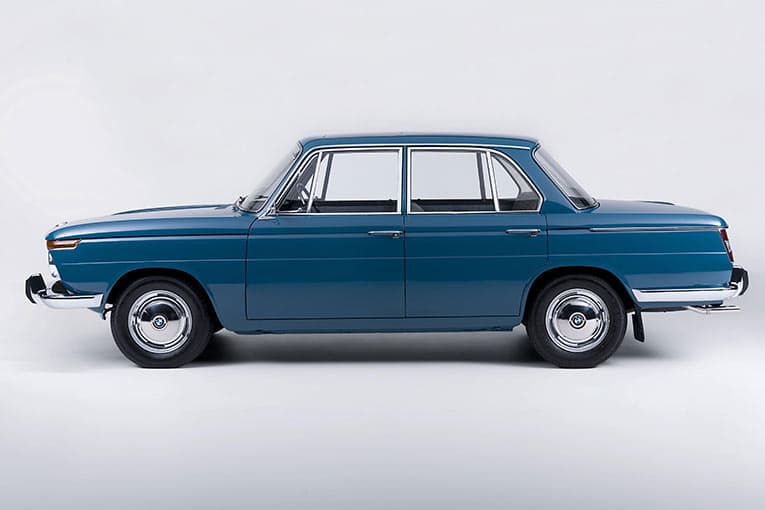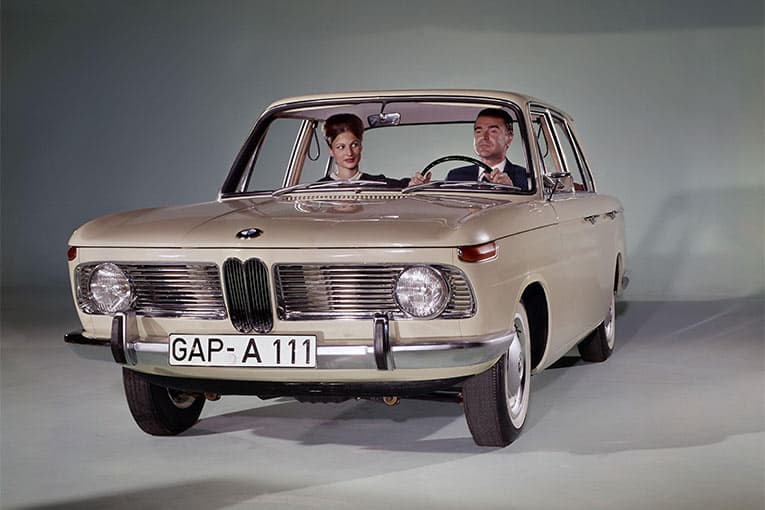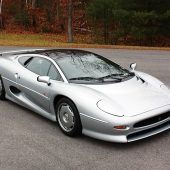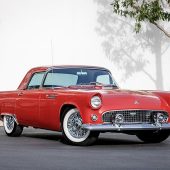Back in the early 1950s BMW had been struck by the lack of a mid-size four-cylinder car. The company needed a new model to sit between the small single- and twin-cylinder variants and the large six- and eight-cylinder models. The development work for the new model got started in 1953, but the lack of funds slowed down the project. The new car was finally ready for a presentation at the Frankfurt Motor Show in 1961. BMW 1500 couldn’t have timed its arrival better. Average incomes in Germany were rising by some ten per cent annually in the early 1960s. Along with climbing incomes, there was also a rise in the demands made on cars. In 1961 the number of new car registrations in Germany crossed the one million threshold for the first time.
The design of the new BMW 1500 was neither conservative nor influenced by American style. It was more reminiscent of Italian cars. BMW’s chief stylist Wilhelm Hofmeister had sought the advice of Giovanni Michelotti, who had already collaborated on the 700. Hofmeister‟s team developed Michelotti‟s draft through to completion, and so the car body bore Michelotti‟s modern, unadorned lines. BMW’s principal shareholder Herbert Quandt insisted the car to have classic BMW twin kidney, so designers put a suitable kidney grille and placed it in the centre to create a new BMW face. From the 1500 on the kidney grille was more ornamentation than key component.

The car‟s body was built according to cutting-edge construction principles. Its structure was welded to the rigid floor assembly and, as a self-supporting all-steel body, formed a cell combining high bending strength and torsional stiffness with low weight. Inner door openings of 828 mm at the front and 726 mm at the rear revealed the importance attached to ease of entry. The individual front seats were contoured and given a bucket-like design in the lower section to provide lateral support around fast corners. The exceptionally efficient use of space in the interior was duplicated in the large boot area, which had a low rear panel to ease loading and a totally level floor to allow the 600-litre luggage space to be exploited to the full. The boot also had to be opened if you wanted to top up the fuel tank, as the filler cap was positioned under the boot lid on the right-hand wing. In order to fundamentally rule out the possibility of the bonnet opening while on the move, the bonnet was front-hinged and held itself wide open.
The BMW engineers performed some ground-breaking work in the design of the chassis. This was the first time that a spring strut front axle had been combined with rear wheels using rocker arm suspension with such care that the roll axis remained virtually horizontal even under varying loads. The BMW 1500 displayed a largely neutral steering tendency even under extremely dynamic cornering and with varying loads, allowing it to resist both understeer and oversteer. In order to more effectively exploit the potential available within the chassis, the BMW engineers increased the size of the standard production model’s wheels and brakes. A new low-profile tyre dimension 6.00-14 was developed specially for the 1500. A round-shoulder design and wide contact patch, coupled with a low height, ensured high lateral forces and therefore impressive stability through corners despite the soft tyre suspension. Another critical enhancement achieved through the switch from 13-inch to 14-inch rims lay in the scope for larger brakes. The exterior dimensions of the front fixed-calliper disc brakes duly increased from 238 mm to 268 mm, the diameter of the rear drum brakes from 230 mm to 250 mm.

Under the bonnet was an all-new 1.5-litre four-cylinder unit developed by BMW’s engine guru Alexander von Falkenhausen. With a stroke of 71 millimetres and a bore of 82 millimetres, the four-cylinder engine was designed as a modern short-stroke unit for the higher rev ranges. It produced 80 horsepower at 5,700rpm and generated 98 Newton metres of torque over a broad bandwidth from 1,400rpm to 5,700rpm, with the curve peaking at 117 Newton metres. That placed it at the top of its class while also permitting lazy shifting thanks to its great flexibility. But in terms of gear spacing, the four-speed transmission was targeted at the sportier driver. It had four all-synchromesh gears that enabled fast, smooth shifting without the need for double-declutching.
The BMW 1500 could sprint from standstill to 100 km/h in 16,8 seconds. Top speed was 150 km/h. Thanks to its streamlined shape, the car body offered relatively little wind resistance, which made for impressive fuel consumption figures. In the prescribed DIN measurement of fuel consumption at 110 km/h, the 1500 managed to undercut the ten-litre threshold by a tenth of a litre. BMW specified fuel consumption on the road as between nine and ten litres per 100 km. With a tank capacity of 53 litres, that was enough to cover a distance of more than 500 kilometres.

BMW 1500’s market launch was planned for the summer of 1962. first customers had already signed contracts during the Frankfurt Motor Show, and by early June 1962, advance orders had already swelled to around 25,000. Production of the 1500 began in September 1962, after the pre-production series of test and demonstration cars had rolled off the assembly line late that spring. Exports to Japan and the USA were also quickly up and running.
BMW 1500 was hugely successful car on the market. It was the first car in the series also known as the New Class or Neue Klasse. The New Class model range expanded quickly. Already in 1963 BMW 1500 was joined by BMW 1800, and in 1964 started the production of the BMW 1600, which was the new entry-level model. Expanded to 1573cc, the four-cylinder engine with its new carburettor developed 83 hp and was capable of 155 km/h. Production of the BMW 1500 was brought to a halt In December 1964. The production of the New Class ended in 1972 after 350,729 car were manufactured. In 1972 BMW’s mid-size range was succeeded by the first BMW 5 Series.










